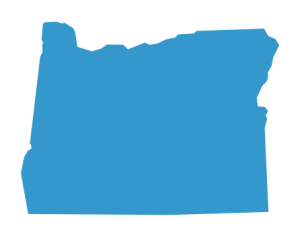Clinical Research Collaboration Experts: Conducting research outside of OHSU

Overview
The CIRCLE (Clinical Research Collaboration Experts) resource group is here to:
- Provide information about how to operationalize clinical research outside of OHSU
- Identify pathways for research teams to establish collaboration with regional external sites.
This resource group is comprised of clinical research professionals embedded in a variety of centralized research institutes and offices who have experience in this area.
Purpose
The CIRCLE helps researchers with decision making with regards to clinical research beyond OHSU and to provide information and pathways to operationalize clinical research outside of OHSU.

-
Increasing enrollment outside of OHSU may help ensure that your research participants are representative of the people who are impacted by the area of study.
-
Investigators should consider enrolling participants across the state to bring research opportunities to every patient, no matter where they live. OHSU is the only academic medical center in Oregon. Our catchment area is the entire state of Oregon and SW Washington.
-
Providing access to research can help build trust in research broadly as well as enhance the relationship the public has with OHSU.
-
Collaborating with communities that are impacted by your research topic improves the quality and validity of your research when you incorporate the patient/community voice and helps identify possible barriers to adoption into a clinical or community setting early.
-
Collaborating with communities increases the likelihood that your results and/or intervention will be disseminated, accepted, adopted, and sustained by those who are impacted.
-
The NIH and FDA are increasingly requiring diverse participation in clinical trials.
General

Acceptance by the community: Will the community hospital, clinic, and/or general public be interested and accepting of the project?
Time: The process for review and acceptance by partner sites or community organizations takes time. It is ideal to include external organizations from inception or as early as possible, to create a true partnership. This is best practice rather than reaching out at a point where the project plan is too rigid to make adjustments needed to operate with a new partner. We can help you plan early to minimize the additional time needed for study start-up at partner/community sites.
Logistics

Infrastructure/physical equipment: Does the site have the necessary equipment, resources, space etc. to conduct the research? For example freezers or dry ice.
Additional requirements for on-site staff: If OHSU staff will go to another site to conduct a portion of the research, OHSU employees may be required to complete additional paperwork and training (e.g. Off Campus Authorization, drug testing, vaccination documentation, trainings or other attestations).
Billing: Non-OHSU sites will need to determine how to bill for research services. This may include determining what (if any) research rates are available, how orders will be placed, and how invoicing or bills will be sent to the research team. Depending on the site and the relationship with OHSU, these options could be completed in a variety of ways. Discussing this early in the process is best.
Shipping: If materials need to be sent to or from the site those details need to be ironed out. Do staff need to be trained in shipping dangerous or biologic materials? What carrier will you use and how will the costs be billed? Is dry ice needed and available?
Costs

Effort: You may need to provide effort (PI, coordinator, both) to support activities at other sites. You may be asked by external partners to modify or augment certain portions of your project so they can be feasible, successful, and supported at their location(s).
Additional costs: Be prepared to consider additional costs when engaging with an external organization or partner. Do not assume research is within their typical scope of practice or community work. Research rates may not exist or be different from rates at OHSU. These may be costs associated with effort on your teams part (see above) or costs requested directly from the external organization (e.g. review fees, regulatory fees).
Other obligations and legal aspects

Regulatory/legal: Depending on the project there may be additional regulatory steps or legal agreements needed for your project. These will contribute to a longer time for startup. Examples include determining if a site is engaged in research, non-disclosure/confidentiality agreements, obtaining IRB approval to add the site, creating site specific consent forms, obtaining Data Use Agreement(s), executing subsite agreement(s) etc.
Data management/sharing: Consider how study data will be shared and tracked. Not all software solutions are available/allowable for studies involving external entities. Are there limitations to their use that need to be taken into account when operationalizing your project? Participant tracking for operational purposes may need to be considered separately from study data collected as a part of the research.
Accounting for Disclosures: If Protected Health Information is being released from one entity to another, researchers may need to develop Data Use Agreements or otherwise account for those disclosures. It should be determined early on, who is accountable and how those disclosures will be completed.
MD Privileges/Licensure: If orders need to be placed at the partner institution considerations need to be taken into account regarding who will write the orders and if the appropriate privileges and licensure to practice at that organization and in that state is in place. Information about licensure can be found on the OHSU Telehealth webpage.
Population planning

As you plan your study, review the populations most impacted by the topic/disease being studied. Determine whether OHSU has the appropriate population available, or if additional sites will be necessary to adequately ensure the population of interest is represented. Considerations of demographic information should be evaluated in the context of the study topic. These resources can help evaluate the OHSU patient population and area demographics:
- Cohort Discovery – an internal OHSU tool to discover how many people meet parameters of inclusion/exclusion
- Publicly available census data
- Consultation with the Data Concierge or the Knight Cancer Data Concierge
Study conduct

If you are unsure of where to start, please contact Kitt Swartz, Director of OCTRI Support and Project Implementation.
If you identify potential off-site organizations as collaborators, then you must determine if they are able to perform the tasks needed for the study. Consider equipment, space, time, interest, and willingness to take part in the study as you envision it. Consider the various offices listed below under “Offices that may be available to facilitate research outside of OHSU” and the attributes of the populations the various offices work with when thinking about possible off-site collaborations.
Offices that may be available to facilitate research outside of OHSU

Community Outreach, Research, and Engagement (CORE)
Advancing community-engaged research by building capacity, trust and partnership to achieve meaningful results for researchers and community members for all Oregonians. Visit the CORE website.
Questions? Contact: communityresearch@ohsu.edu or complete the CORE Intake Form.

Oregon Rural Practice-based Research Network (ORPRN)
Statewide network of primary care clinicians, community partners and academics dedicated to studying the delivery of health care. Vist the ORPRN website.
Questions? Contact: orprn@ohsu.edu

OHSU Knight Community Outreach and Engagement (COE)
Collaboration of select community hospitals (Bay Area Hospital, Salem Health System) in the PNW working with the OHSU Knight Cancer Institute. Visit the COE website.
Questions? Contact: communityresearch@ohsu.edu

Oregon Clinical and Translational Research Institute (OCTRI) Navigator
Clinical and translational science institute at OHSU aimed at providing guidance, support and services for researchers. Visit the OCTRI Navigator web page.
Questions? Contact: octri@ohsu.edu
Additional central offices you may need to work with
IRB
OHSU Institutional Review Board (IRB)
Human subject research approval for OHSU engagement. May provide approvals for regional organizations (on a case by case basis). Visit the IRB website.
Questions? Contact: irb@ohsu.edu
Additional IRB resources:
IRB Help Sheet for Collaborations with Non-OHSU Institutions
IRB Quick Guide for Collaborations with Non-OHSU Institutions
IRB Quick Guide for QI vs. Research
Billing
Clinical Research Billing Office (CRBO)
Set up for compliant billing at OHSU Health Affiliates. Visit the CRBO web page.
Questions? Contact: crbo@ohsu.edu
Contract or Subaward
OHSU Subaward
Subaward contact in OPAM can assist in determining if a sub award or contract is needed.
Questions? Contact: OPAM Subout
Resources

Printable document outlining "Considerations for Bringing Clinical Research Outside of OHSU"
Running Research In Oregon Communities Review (ROCR) System
Regional population landscapes can be found on the Community Outreach, Research and Engagement site.
Link to the OHSU Family Medicine Research Collaboration Intake Form
More Resources coming soon!